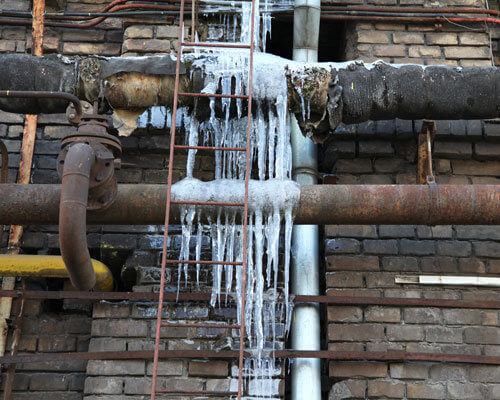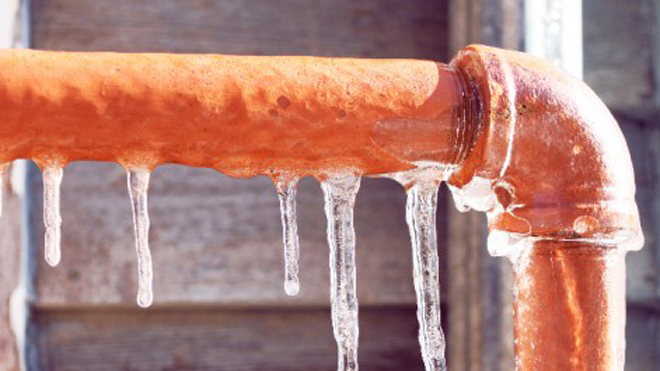Avoiding Frozen Plumbing in Winter: Critical Tips
Avoiding Frozen Plumbing in Winter: Critical Tips
Blog Article
Just how do you really feel when it comes to 6 Ways to Prevent Frozen Pipes?

Winter can wreak havoc on your plumbing, especially by freezing pipelines. Here's exactly how to stop it from taking place and what to do if it does.
Introduction
As temperatures decrease, the danger of icy pipelines rises, possibly bring about pricey fixings and water damages. Recognizing just how to stop frozen pipes is essential for house owners in chilly environments.
Understanding Frozen Pipelines
What causes pipelines to ice up?
Pipelines ice up when exposed to temperature levels listed below 32 ° F (0 ° C) for prolonged durations. As water inside the pipelines ices up, it increases, taxing the pipeline wall surfaces and possibly creating them to break.
Threats and problems
Icy pipes can lead to supply of water interruptions, building damages, and costly repair services. Burst pipes can flooding homes and trigger comprehensive architectural damages.
Indications of Frozen Pipes
Recognizing icy pipes early can stop them from rupturing.
How to identify icy pipes
Look for reduced water flow from faucets, uncommon smells or sounds from pipes, and visible frost on exposed pipes.
Prevention Tips
Protecting prone pipelines
Cover pipelines in insulation sleeves or make use of warmth tape to protect them from freezing temperatures. Focus on pipelines in unheated or external locations of the home.
Home heating techniques
Keep interior rooms properly heated, specifically locations with plumbing. Open cabinet doors to enable cozy air to distribute around pipes under sinks.
Shielding Exterior Plumbing
Garden pipes and exterior taps
Disconnect and drain garden hoses before wintertime. Set up frost-proof faucets or cover outdoor taps with protected caps.
What to Do If Your Pipes Freeze
Immediate actions to take
If you believe icy pipelines, keep faucets available to ease stress as the ice thaws. Utilize a hairdryer or towels soaked in warm water to thaw pipes gradually.
Long-Term Solutions
Structural adjustments
Take into consideration rerouting pipes far from exterior wall surfaces or unheated areas. Include extra insulation to attic rooms, basements, and crawl spaces.
Upgrading insulation
Buy top notch insulation for pipelines, attics, and walls. Appropriate insulation helps preserve regular temperatures and decreases the threat of icy pipes.
Final thought
Protecting against frozen pipelines requires proactive procedures and fast feedbacks. By understanding the causes, signs, and preventive measures, house owners can secure their pipes throughout winter.
5 Ways to Prevent Frozen Pipes
Drain Outdoor Faucets and Disconnect Hoses
First, close the shut-off valve that controls the flow of water in the pipe to your outdoor faucet. Then, head outside to disconnect and drain your hose and open the outdoor faucet to allow the water to completely drain out of the line. Turn off the faucet when done. Finally, head back to the shut-off valve and drain the remaining water inside the pipe into a bucket or container. Additionally, if you have a home irrigation system, you should consider hiring an expert to clear the system of water each year.
Insulate Pipes
One of the best and most cost-effective methods for preventing frozen water pipes is to wrap your pipes with insulation. This is especially important for areas in your home that aren’t exposed to heat, such as an attic. We suggest using foam sleeves, which can typically be found at your local hardware store.
Keep Heat Running at 65
Your pipes are located inside your walls, and the temperature there is much colder than the rest of the house. To prevent your pipes from freezing, The Insurance Information Institute suggests that you keep your home heated to at least 65 degrees, even when traveling. You may want to invest in smart devices that can keep an eye on the temperature in your home while you’re away.
Leave Water Dripping
Moving water — even a small trickle — can prevent ice from forming inside your pipes. When freezing temps are imminent, start a drip of water from all faucets that serve exposed pipes. Leaving a few faucets running will also help relieve pressure inside the pipes and help prevent a rupture if the water inside freezes.
Open Cupboard Doors
Warm your kitchen and bathroom pipes by opening cupboards and vanities. You should also leave your interior doors ajar to help warm air circulate evenly throughout your home.

I am very intrigued by 6 Ways to Prevent Frozen Pipes and I hope you enjoyed the new piece. In case you enjoyed reading our page please remember to share it. Thanks a lot for being here. Don't forget to check up our website back soon.
Call Today Report this page